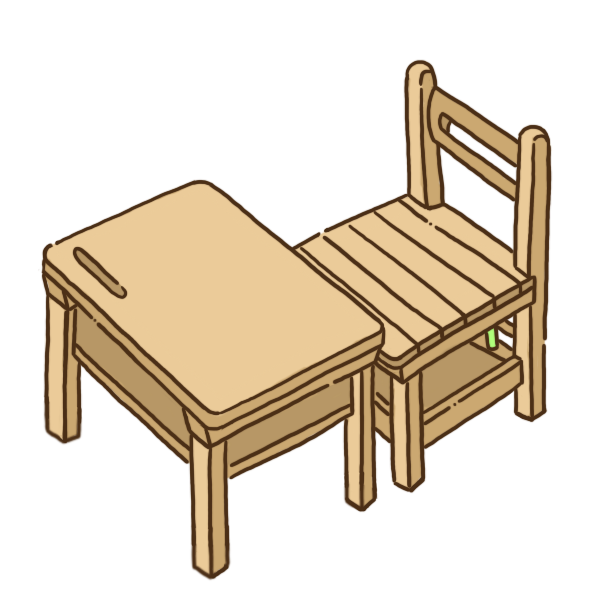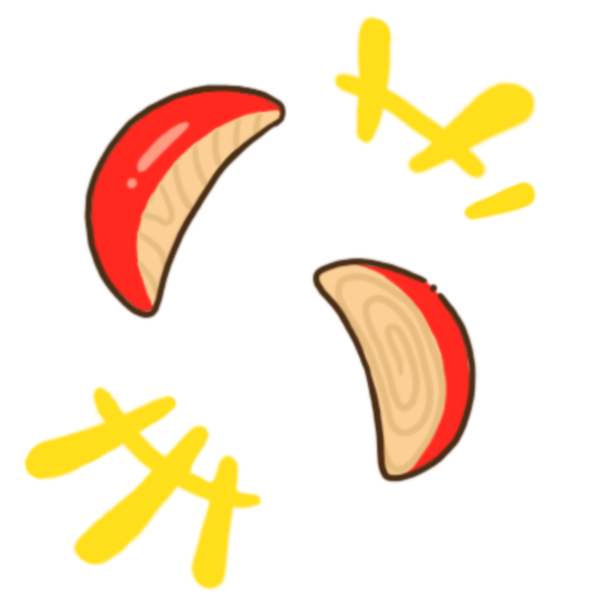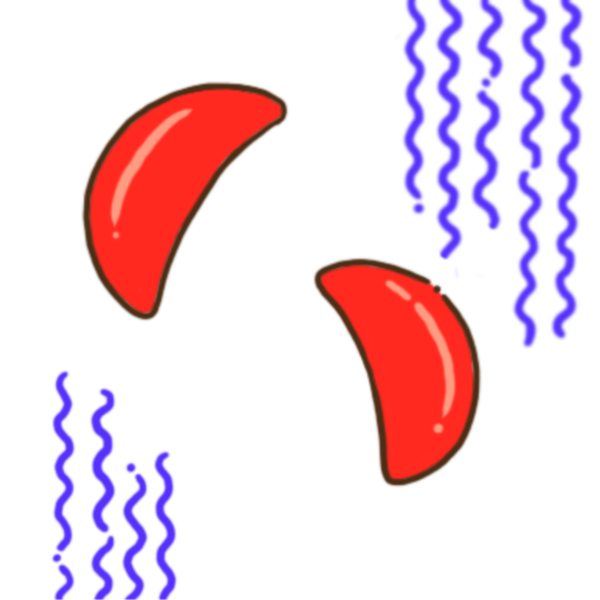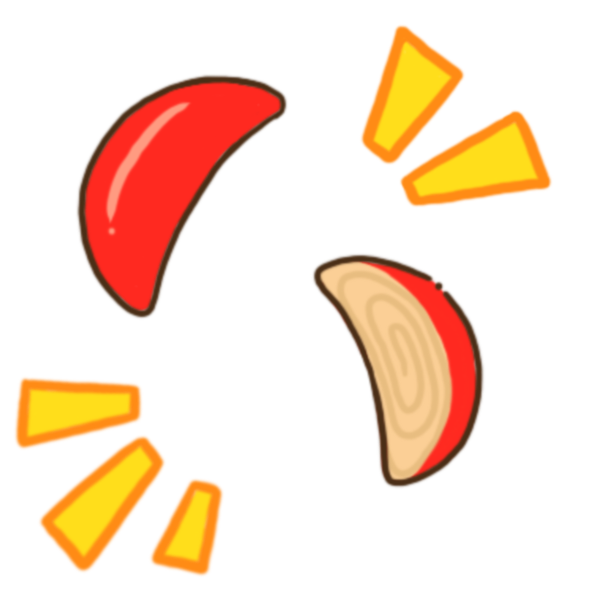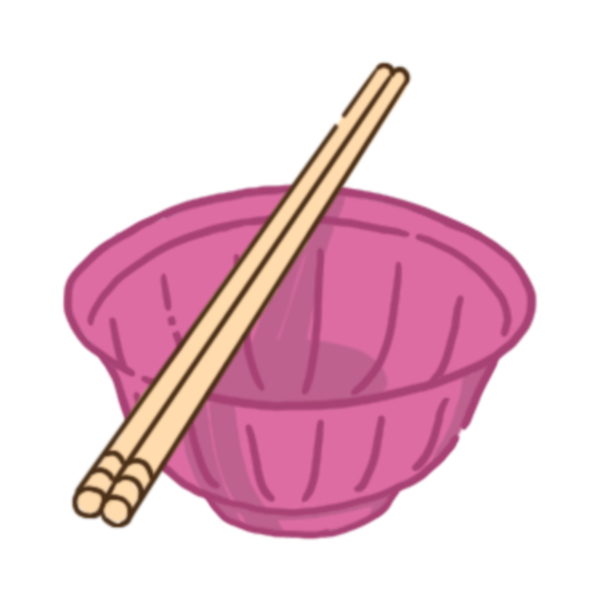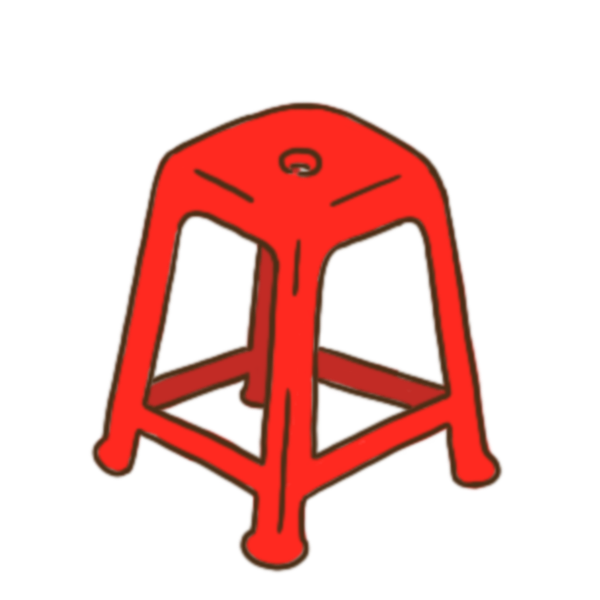What's the next class later?
* Classrooms in Taiwan are different from those in Japan or Korea—students usually don’t take off their shoes. However, during cleaning time, it’s common to lift chairs onto desks. I've heard that some students are even able to balance their chairs diagonally using the pencil groove on the desk.
Pomelo and BBQ smell... I got to wash my hair today!
* Taiwanese people eat pomelo during the Moon Festival (or Mid-Autumn Festival, 8/15 of the lunar calendar). Children often put on pomelo hats to celebrate. Madou District in Tainan City is famous for pomelos. Be careful that citrus fruits are poisonous to cats!
Haven't you finished lunch, Grandpa? Lemme wait for you then
* Poe Divination (Pua̍h-Pue 擲筊 in Taiwanese) is part of the folk belief that involves throwing two half-moon-shaped wooden blocks, each of which is flat on one side and rounded on the other, in order to ask for answers from gods or ancestors. The flat side is considered positive, and the round side is negative. We throw the two poe to the ground at the same time.
Tshiò-Pue 笑筊:
When both of the blocks have their flat side facing down, this shows the Deity's disagreement with the devotee's question or plea. It can also mean that it is not yet the right time to start the things being asked.
God says: NO!
* Poe Divination (Pua̍h-Pue 擲筊 in Taiwanese) is part of the folk belief that involves throwing two half-moon-shaped wooden blocks, each of which is flat on one side and rounded on the other, in order to ask for answers from gods or ancestors. The flat side is considered positive, and the round side is negative. We throw the two poe to the ground at the same time.
Im-Pue 陰筊:
When both of the blocks have their flat side facing down, this shows the Deity's disagreement with the devotee's question or plea. It can also mean that it is not yet the right time to start the things being asked.
Everything will go well!
* Poe Divination (Pua̍h-Pue 擲筊 in Taiwanese) is part of the folk belief that involves throwing two half-moon-shaped wooden blocks, each of which is flat on one side and rounded on the other, in order to ask for answers from gods or ancestors. The flat side is considered positive, and the round side is negative. We throw the two poe to the ground at the same time.
Siūnn-Pue 聖筊:
When one of the blocks has its flat side facing up and the other has its flat side facing down, this shows the Deity's agreement with the devotee's question or plea. It can also mean that the things being asked would be successful.
Steamed sticky rice with red crab, Buddha Jumps Over the Wall, fried rice noodles, deep-fried sticky rice balls... What will appear on the table today?
* Pān-toh (辦桌) and flowing banquet (流水席) are outdoor folk banquet activities in Taiwan and southern China. They can be held at weddings, funerals, new home move-ins, one-month birthday celebrations, teacher appreciation parties, year-end banquets, temple fairs, and local elections, among others, and guests are entertained with a banquet under a tent.
The venue is typically located by the roadside, in temple squares, or at community activity centers. Stoves and food preparation tables are set up nearby, and ingredients are cooked on site.
As for what dishes to prepare, "tsóng-phòo-sai (總舖師, the "head chef" )" is in charge of the kitchen and is responsible for directing the dishes and the process of the entire banquet.
Steamed sticky rice with red crab, Buddha Jumps Over the Wall, fried rice noodles, deep-fried sticky rice balls... What will appear on the table today?
* Pān-toh (辦桌) and flowing banquet (流水席) are outdoor folk banquet activities in Taiwan and southern China. They can be held at weddings, funerals, new home move-ins, one-month birthday celebrations, teacher appreciation parties, year-end banquets, temple fairs, and local elections, among others, and guests are entertained with a banquet under a tent.
The venue is typically located by the roadside, in temple squares, or at community activity centers. Stoves and food preparation tables are set up nearby, and ingredients are cooked on site.
As for what dishes to prepare, "tsóng-phòo-sai (總舖師, the "head chef" )" is in charge of the kitchen and is responsible for directing the dishes and the process of the entire banquet.
Black, blue, green, purple, and orange, these five-colored soccer-chocolate-balls are one of the childhood memories of many Taiwanese people.
